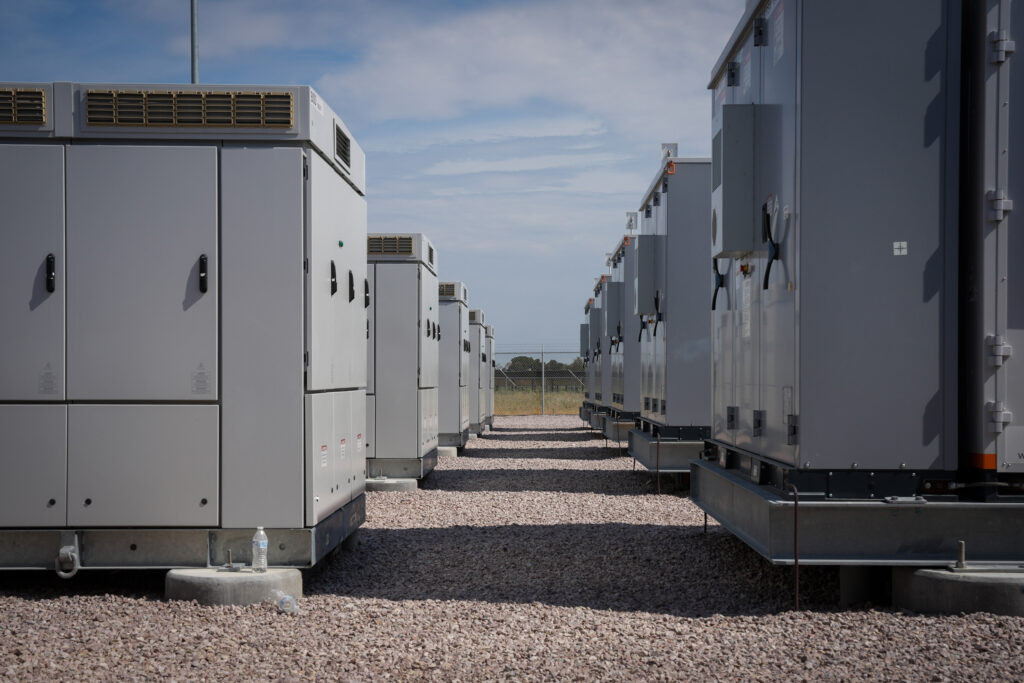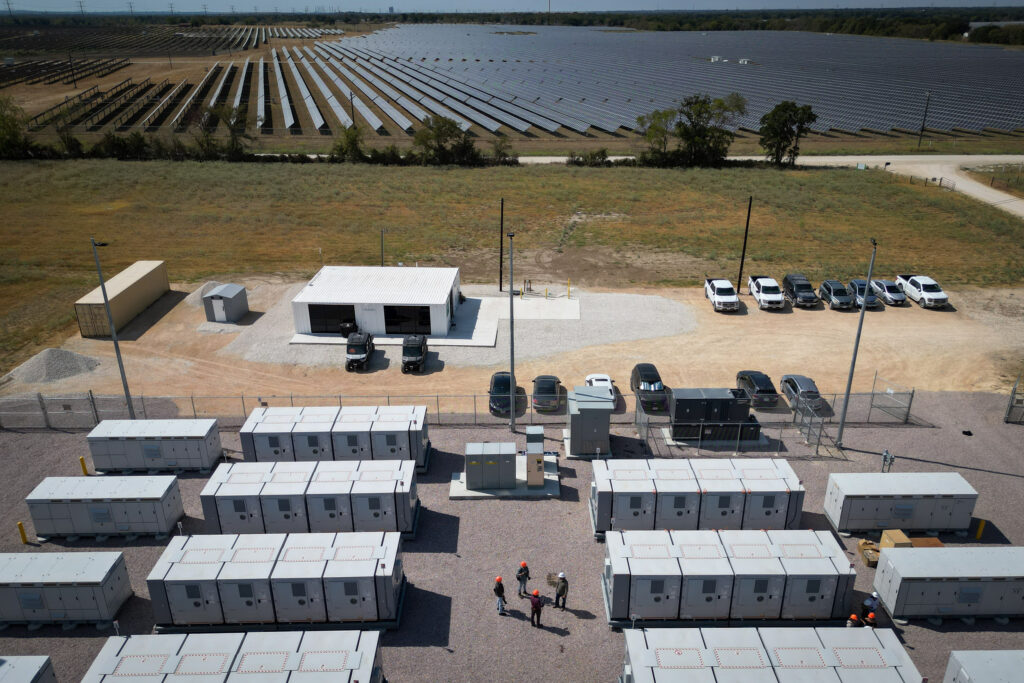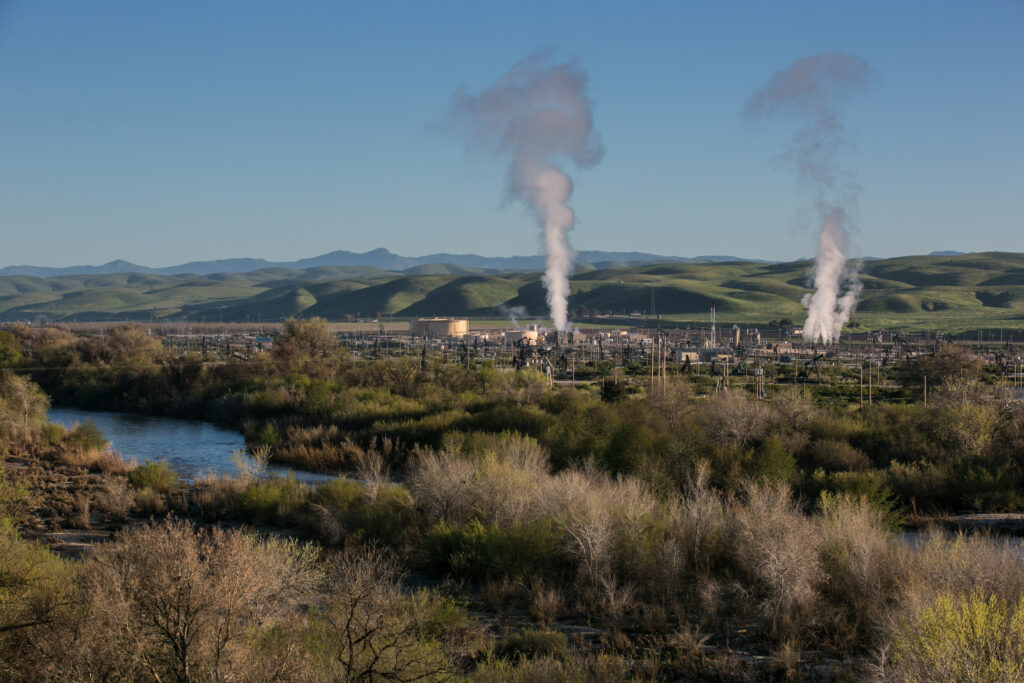The United States added 22,332 megawatts of power plant capacity in the first half of this year, and the vast majority of it was utility-scale solar, batteries and onshore wind.
Natural gas was next, and there was zero new coal or nuclear, according to the Energy Information Administration.
Through 2030, the U.S. energy landscape looks a lot like these last six months in terms of the mix of new power plants, with solar and batteries leading the way, according to the EIA’s list of planned power plants.
I’m digging into the numbers to try to make sense of the contrast between the Trump administration’s push to expand use of natural gas, coal and nuclear power, and the reality of which kinds of power plants—mainly renewables—are on track to serve the grid of the near future.
Some of this contrast can be explained by the normal lag to develop a power plant. Most of the recently completed projects have been in the works since about 2020, which feels like ancient history.
The Trump administration’s policy changes, which tend to favor fossil fuels and disfavor renewable energy, haven’t had much time to translate into projects with firm timelines.
But even so, it’s important to note that the administration is limited in how much, and how quickly, it can change trends in energy development, said David Victor, a professor of innovation and public policy at the University of California San Diego.
“There’s a lot of inertia in the system, which means that when you’re trying to build new clean stuff, it takes a long time to get going in that direction, but when you’re trying to stop building clean stuff and build dirty stuff, which seems to be the Trump policy, it takes a long time for that signal to be felt in the system,” he said.
Some wind and solar projects may be cancelled because of the rapid phaseout of tax credits in the One Big Beautiful Bill Act, which Trump signed this month. The new law affects the investment tax credit and production tax credit, the main incentives for companies building utility-scale renewables.
But Victor views this as more of a slowdown than a reversal of momentum. One reason is that demand for electricity continues to rise to serve data centers and other large power users. The main beneficiaries are energy technologies that are the easiest to build and most cost effective, including solar, batteries and gas.
In the first half of this year, the United States added 341 new power plants or utility-scale battery systems, with a total of 22,332 megawatts of summer generating capacity, according to EIA.

More than half the total was utility-scale solar, with 12,034 megawatts, followed by battery systems, with 5,900 megawatts, onshore wind, with 2,697 megawatts, and natural gas, with 1,691 megawatts, which includes several types of natural gas plants.
The largest new plant by capacity was the 600-megawatt Hornet Solar in Swisher County, Texas, which went online in April.
“Hornet Solar is a testament to how large-scale energy projects can deliver reliable, domestic power to American homes and businesses,” said Juan Suarez, co-CEO of the developer, Vesper Energy of the Dallas area, in a statement from the ribbon-cutting ceremony.
The plants being completed now are special in part because of what they have endured, said Ric O’Connell, executive director of GridLab, a nonprofit that does technical analysis for regulators and renewable power advocates. Power plants take years to plan and build, and current projects likely began development during the COVID-19 pandemic. They stayed on track despite high inflation, parts shortages and challenges in getting approval for grid connections, he said.
“It’s been a rocky road for a lot of these projects, so it’s exciting to see them online,” O’Connell said.


Looking ahead to the rest of this year and through 2030, the country has 254,126 megawatts of planned power plants, according to EIA. (To appear on this list, a project must meet three of four benchmarks: land acquisition, permits obtained, financing received and a contract completed for selling electricity.)
Solar is the leader with 120,269 megawatts, followed by batteries, with 65,051 megawatts, and natural gas, with 35,081 megawatts.
There are zero coal-fired power plants, and one nuclear plant: Kemmerer Unit 1 in Lincoln County, Wyoming, developed by TerraPower, which is listed with projected completion by December 2030. The proposed restarts of closed nuclear plants, such as Palisades in Michigan, have not yet shown up in the data.
The planned capacity is a lot. For perspective, the country’s current power plants, including the ones that began operation this year, have about 2.5 million megawatts.
A caveat: When comparing different power technologies, generating capacity is only part of the picture. It’s important to consider the typical electricity production of a plant and how predictable this output will be.
For example, a combined cycle gas plant, the most common type of gas plant, has an average “capacity factor” of 60 percent. This is a number that shows how much electricity a plant produces compared to if it were running at full strength all the time.
Utility-scale solar has an average capacity factor of 23 percent, limited by the fact that the sun goes down at night. (You can see 2024 capacity factors for fossil-fuel technologies here and non-fossil technologies here.)
This story is funded by readers like you.
Our nonprofit newsroom provides award-winning climate coverage free of charge and advertising. We rely on donations from readers like you to keep going. Please donate now to support our work.
Donate Now
So, solar’s dominance in terms of new capacity coming online is tempered by its limitations. Developers work around this by building solar alongside battery energy storage. Some of the largest projects this year were solar arrays located next to battery systems, such as Sun Streams 4, which is a 300-megawatt solar project and a 300-megawatt battery project in Maricopa County, Arizona, developed by Longroad Energy of Boston.
Gas also has plenty of problems, including vulnerability to interruptions in fuel supply and fluctuations in fuel prices, long waits for parts required for new plant construction, and, of course, the release of greenhouse gases that are making the earth less habitable.
These problems are part of why O’Connell is skeptical of the Trump administration’s ability to encourage more growth in gas-fired power than was already happening.
“There are real questions about how much gas we can really build,” he said.
I realize this view may be hard to swallow, considering all of the attacks on renewable energy and the government’s support for fossil fuels. But I also know from years of covering energy that times like these—with major policy changes and uncomfortable levels of chaos—are some of the worst moments to think with clarity about what may be ahead.
Other stories about the energy transition to take note of this week:
EPA Rescinds Finding That Emissions Harm Human Health, Hobbling U.S. Climate Action: As expected, the Environmental Protection Agency has begun the process of rescinding the 2009 determination that greenhouse gas emissions hurt human health and the environment, as my colleague Wyatt Myskow reports. This attempt to get rid of the so-called “endangerment finding” is a fundamental change to the government’s role in dealing with climate change, with broad ramifications for the clean energy economy.
Palisades Nuclear Moves Closer to a Restart: The Palisades nuclear plant in Michigan received approval from the Nuclear Regulatory Commission last week to resume operations later this year. The operator of the 800-megawatt plant can now receive new fuel and take other steps to reopen, as Robert Walton reports for Utility Dive. Palisades is one of several shuttered nuclear power plants in the United States that are in some phase of restarting as the country looks to meet rising demand for electricity.
The U.S. Wind Sector Is Seeing a Brief Rebound But Challenging Times Are Ahead: The United States added about 2,100 megawatts of wind power in the first quarter of this year and is on track to add about 8,100 megawatts, which would be an increase from 2024, according to the latest tally from Wood Mackenzie and the American Clean Power Association. But there are many signs that this industry is heading into challenging times, including a decrease in parts orders and the Trump administration’s often-discussed antipathy for wind turbines, as Ben Geman reports for Axios.
Can Virtual Power Plants Provide a Lifeline for Rooftop Solar? Tax credits for buyers of rooftop solar are set to end in December, which is likely to send shockwaves through the economy of companies that serve this industry. The growth of virtual power plants could help to reduce this blow, as Jeff St. John reports for Canary Media. Virtual power plants are networks of solar panels and batteries that can be placed in a network using software controls and send power into the grid at times of high demand, with compensation for the participating households. Energy companies are increasingly looking to virtual power plants as a way to provide short-term power that could replace some of the use of natural gas peaking plants that only operate in short bursts.
Inside Clean Energy is ICN’s weekly bulletin of news and analysis about the energy transition. Send news tips and questions to [email protected].
About This Story
Perhaps you noticed: This story, like all the news we publish, is free to read. That’s because Inside Climate News is a 501c3 nonprofit organization. We do not charge a subscription fee, lock our news behind a paywall, or clutter our website with ads. We make our news on climate and the environment freely available to you and anyone who wants it.
That’s not all. We also share our news for free with scores of other media organizations around the country. Many of them can’t afford to do environmental journalism of their own. We’ve built bureaus from coast to coast to report local stories, collaborate with local newsrooms and co-publish articles so that this vital work is shared as widely as possible.
Two of us launched ICN in 2007. Six years later we earned a Pulitzer Prize for National Reporting, and now we run the oldest and largest dedicated climate newsroom in the nation. We tell the story in all its complexity. We hold polluters accountable. We expose environmental injustice. We debunk misinformation. We scrutinize solutions and inspire action.
Donations from readers like you fund every aspect of what we do. If you don’t already, will you support our ongoing work, our reporting on the biggest crisis facing our planet, and help us reach even more readers in more places?
Please take a moment to make a tax-deductible donation. Every one of them makes a difference.
Thank you,

















